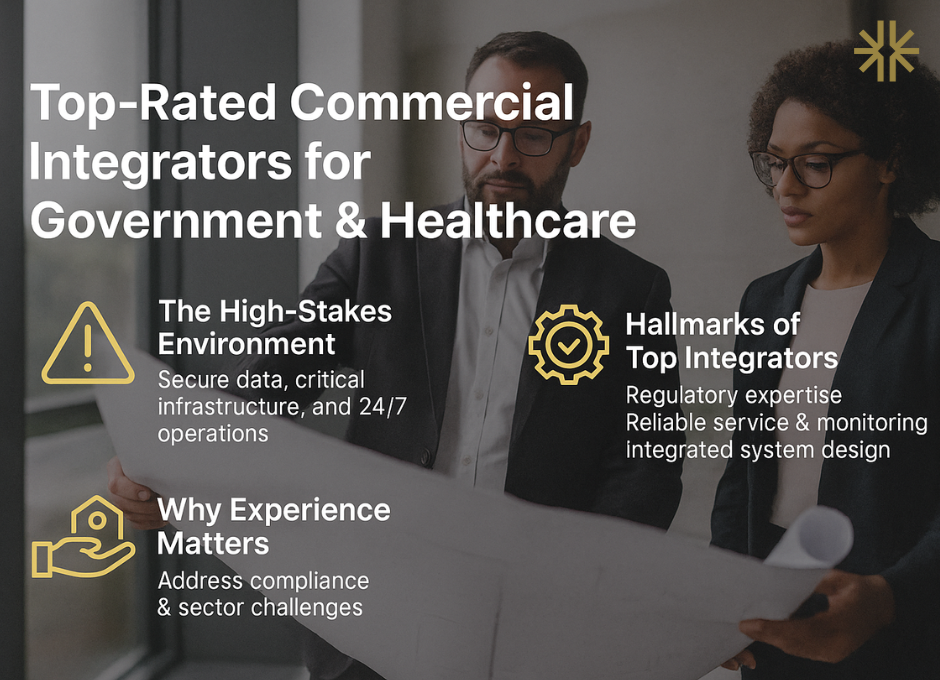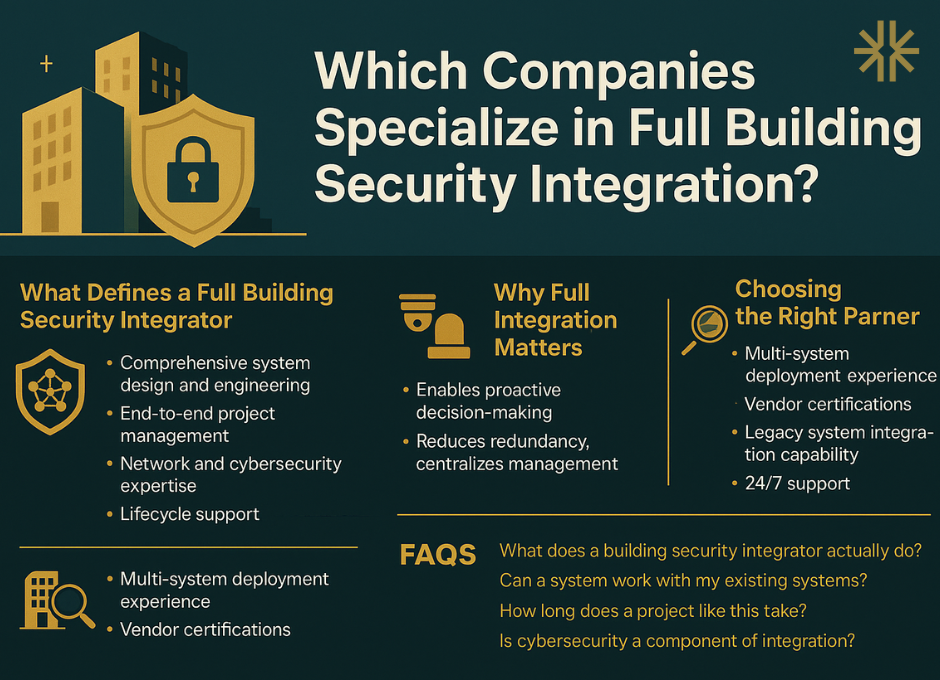
Why Integrated Security and Life Safety Systems Are Critical for Modern Organizations
Every organization shares the same fundamental responsibility. Keep people safe and protect the continuity of operations. Yet as threats become more unpredictable and buildings become more connected, traditional standalone systems can leave critical gaps. Integrating security and life safety systems creates the unified protection strategy that today’s environments demand.
A technology ecosystem that communicates in real time supports safer decision making, faster responses, and greater confidence when every second matters.
Stronger Situational Awareness
Security and life safety systems generate an enormous amount of data. Cameras capture events in real time, access readers log entry points, fire panels monitor hazards, and mass notification platforms deliver alerts. When these systems operate independently, valuable information becomes siloed. Operators must switch screens, interpret disconnected data, and make decisions with an incomplete picture.
Integration connects these intelligence streams. Events such as a door forced open or a fire alarm activation instantly trigger visual confirmation, automated actions, and notifications. Teams quickly understand what is happening and where, supporting more accurate and timely responses.
Faster Emergency Response
In an emergency, delays put people and property at risk. Unified systems remove the friction created when teams must coordinate information manually. Access control can automatically unlock evacuation routes. Cameras can focus on priority zones. Notifications can reach occupants, first responders, and leadership at once.
When the right actions occur seconds faster, the impact can be life changing.
Reduced Risk and Operational Burdens
Disconnected systems often lead to costly redundancies and inconsistent security practices across locations. Integrating platforms reduces manual oversight and repetitive maintenance. Organizations gain centralized visibility and standardized reporting, making compliance easier and reducing the risk of unnoticed vulnerabilities.
A single source of truth promotes clearer accountability and more effective resource allocation.
Smarter Insights for Proactive Strategy
Unified systems generate analytics that support prevention and operational improvement. Heat mapping, access trends, and incident data help organizations optimize staffing, redesign traffic flow, or improve visitor management policies. This combination of intelligence and automation strengthens both daily efficiency and long term resilience.
Security becomes more predictive, not just reactive.
Future Ready Protection
Technology evolves quickly. Modern integration platforms create a flexible foundation that adapts as needs change. Organizations can layer in new features, sensors, and analytics without outdated hardware holding them back. The result is a scalable safety strategy built for tomorrow.
The Bottom Line
Safety is strongest when systems work together. Integrating security and life safety technology transforms fragmented operations into a cohesive framework designed to protect people, assets, and mission continuity.
Organizations that prioritize unified protection today will be better prepared for the challenges ahead.
Frequently Asked Questions
What is the difference between security systems and life safety systems?
Security systems focus on preventing and detecting unauthorized access or threats, such as video surveillance, access control, and intrusion detection. Life safety systems support emergency response and occupant protection, including fire detection, mass notification, and emergency communications. When combined, they deliver a more complete approach to protecting people and operations.
Why can standalone systems create risk?
When technology operates independently, critical details can be missed. Operators may need to switch between software platforms, interpret inconsistent data, and manually coordinate responses during fast-moving events. These gaps increase the chance of delayed or incorrect decisions.
How does system integration improve emergency response time?
Integrated platforms automate key actions. A single incident can trigger multiple responses simultaneously, such as unlocking exits, repositioning cameras, sending alerts, and notifying responders. Eliminating manual handoffs ensures lifesaving decisions happen faster.
Is integration only for large enterprises?
No. Any organization that manages people, property, or critical operations benefits from unified protection. Schools, healthcare facilities, manufacturing plants, commercial buildings, and even multi-site small businesses can all improve efficiency and safety through integration.
Can existing systems be integrated or does everything need to be replaced?
Many modern platforms are designed for interoperability, allowing organizations to connect existing equipment while expanding capability over time. Integration creates a scalable path forward, rather than requiring full system replacement.
What role does data play in integrated safety?
Unified systems provide a holistic, real-time picture of what is happening across a facility. That intelligence helps detect issues earlier, guide responses more accurately, and generate insights that strengthen long-term planning and operational resilience.
How does integration support compliance?
Standardizing procedures and reporting across locations promotes consistent safety practices. Automated logs, centralized monitoring, and documented response actions make audits and regulatory requirements easier to manage.
Is integration future-proof?
While no system lasts forever, integrated architectures are designed to evolve. They make it easier to adopt new analytics, sensors, and AI-driven capabilities without major disruption to existing infrastructure.


